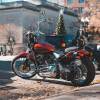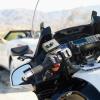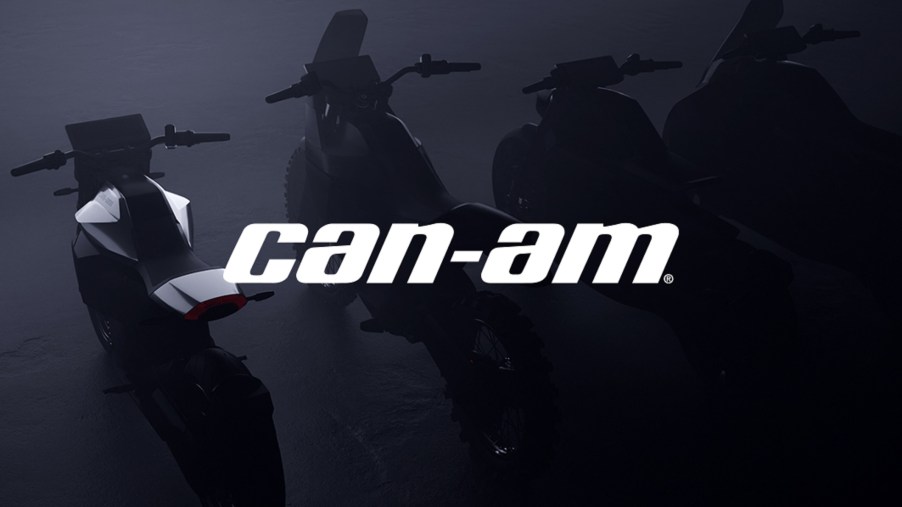
Can-Am Motorcycles Makes a Shocking Electric Return in 2024
It’s a historic time for motorcycles as interest in electric power grows. Not just because of the potential technology shake-ups, but the chance for some to revisit history. The storied but long-dormant British brand BSA, for example, is about to make its EV return. And soon, Zero and Harley-Davidson won’t be the only major North American players in the two-wheeled EV space. After decades of silence, it’s time for Can-Am Motorcycles 2: Electric Boogaloo.
BRP resurrects Can-Am Motorcycles to go beyond the Spyder and into an electric future
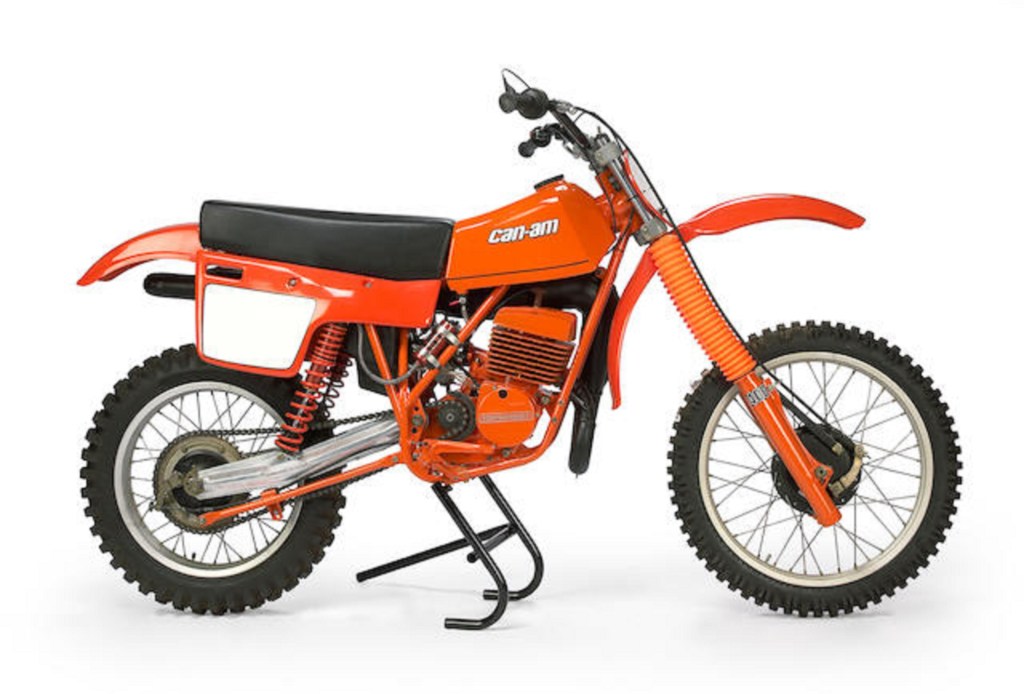
You might not be intimately familiar with the Canadian company Bombardier Recreational Products (BRP), but you probably know its products. BRP’s founder invented the modern snowmobile with the Ski-Doo while the Sea-Doo brand helped establish the personal watercraft market. The company also owns engine-maker Rotax, which has supplied engines for Harley-Davidson, BMW, and CCM.
And, more importantly here, it owns Can-Am, which today makes well-reviewed ATVs and the legally-a-motorcycle Spyder trike. However, it didn’t start that way.
In the 1970s, BRP needed something for its Ski-Doo dealers to sell during the summer, Bonhams explains. At the time, off-road motorcycle sales were booming. Two-stroke dirt bikes, with their simple, lightweight, but powerful powertrains were especially popular. So, with help from champion motocross rider Jeff Smith, BRP designed an off-road frame for Rotax’s then-new rotary-valve two-stroke engines. And the first Can-Am motorcycles, the MX-1 and TnT, were born.
Can-Am’s motorcycles immediately proved their competitive worth, with TnT riders placing first, second, and third in the 1973 International Six Days Trial. Then, in 1974, MX-250 riders swept the AMA 250 Motocross Championships. But over the years, Can-Am’s pursuit of more powerful engines made its bikes almost unrideable. BRP sold it in the early 1980s to CCM’s predecessor, who shuttered Can-Am in 1987.
Now, though, BRP is giving Can-Am Motorcycles a new lease on life. Only this time, it won’t be a two-stroke or four-stroke brand. Instead, it’s making electric motorcycles.
What kinds of electric motorcycles will Can-Am make?
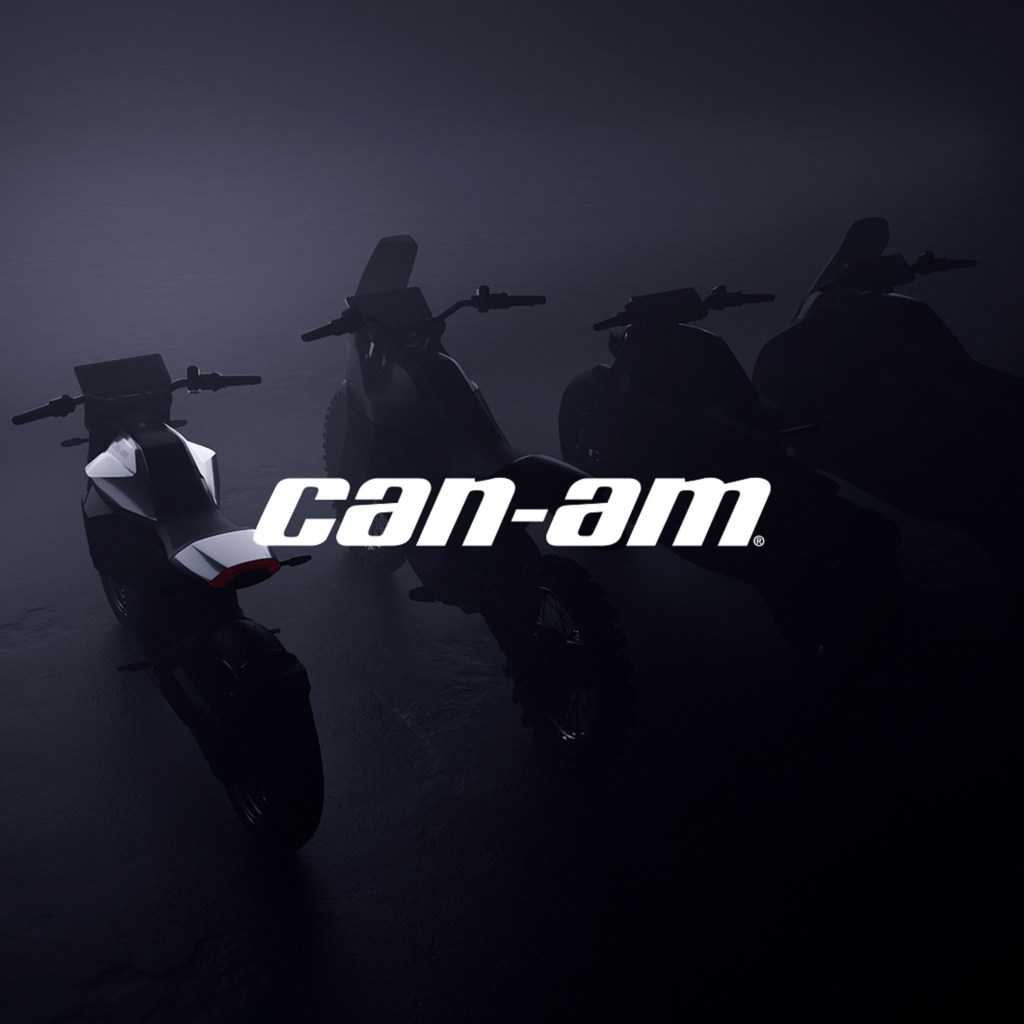
As shocking (sorry) as Can-Am Motorcycles’ electric resurrection might be to some, it doesn’t come completely out of the blue.
For one, BRP unveiled several electric concept bikes back in 2019, including a BEV trike, Cycle World notes. Secondly, last year it confirmed that all its product lines would offer EVs. And patents revealed earlier this month suggested that BRP had an entire electric motorcycle range in the works. Plus, expanding the Can-Am On-Road brand by bringing back a historic nameplate is a solid marketing move.
Unfortunately, as of this writing, we don’t know what kinds of electric motorcycles Can-Am plans to release first. The patents describe five kinds of bikes—cruiser, retro, roadster, sportbike, and off-road—but the BRP teaser only shows four silhouettes. However, the company’s press release references “everyday commuting” as well as “recreational on- and off-road riding.” And one of the silhouettes in the teaser resembles a dual-sport or perhaps an adventure bike.
Does Can-Am Motorcycles’ electric return mean Alta Motors is back?
There’s another wrinkle to this story, though. As of this writing, BRP hasn’t released any technical details about the upcoming electric Can-Am motorcycles. But that might not be just because of timing. It could also stem from where it might be getting its EV tech: Alta.
Just a few years ago, California-based Alta Motors was a rising star in the electric motorcycle world. Riders praised its dual-sport Redshift EXR; one Cycle World reviewer even said they might be faster on the EXR than a gas-powered bike on tight roads. And in 2018, Harley-Davidson announced it would be partnering with and investing in the company.
However, shortly thereafter, Harley decided to go it alone with EVs and Alta went suddenly bankrupt. Due to legal reasons, no one involved has been able to officially discuss it. YouTube motorcycle channel FortNine explains in the video above that it could stem from a combination of poor business decisions and financial-pressure-related negotiation tactics. Regardless, it’s here where BRP comes in and things get tricky.
After Alta went bankrupt, BRP bought some of its assets in 2019. But because of Alta’s and Harley’s partnership attempt, BRP couldn’t just put Alta’s tech into its electric motorcycles. Yet the purchase did include at least some IP rights and assets. So, it might not be much, but a bit of Alta could live again in Can-Am motorcycles.
We’ll know more before 2024
It’ll take some time before whatever electric tech these new Can-Am motorcycles are packing hits the street, though. BRP says the first bikes should arrive in existing Can-Am dealers by mid-2024.
But we might not have to wait that long for additional details. A brand spokesperson told me that more news should be coming in the next few weeks. In the meantime, welcome back, Can-Am—how’s your electric slide?
Follow more updates from MotorBiscuit on our Facebook page.

